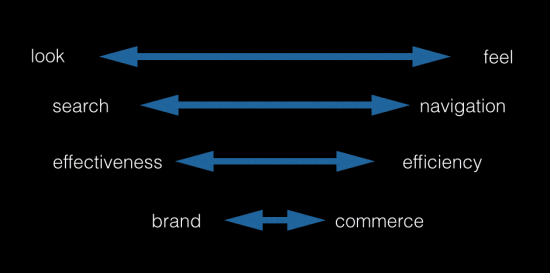Among the many acronyms out there being used by consultants, agencies and brand marketing teams alike is 1-to-1 or 1-to-many. Or, as my friend Brian Solis says frequently, in this digitally enhanced era, there is one-to-one-to-many. In parallel, there has been an ever greater focus on the value of content marketing (with a wing tip to context marketing and the brand new book “The Age of Context” by Robert Scoble). Not to be contrarian, but I think that one of the biggest challenges facing companies today is the ability to choose. This entails being more strategic in allocating one’s resources. And, very poignantly, this means focusing on the most important customers: the ones who are or may become loyal.
Conflicting options
For website developers (especially those doing eCommerce sites), one of the biggest issues is creating a great user experience (UX). The inherent issue is that there are many users, meaning that it is outright impossible to make the experience perfect for everyone. What makes for a good UX for one person may not work for someone else. There is design (look) and functionality (feel). There is efficiency and effectiveness. There is search and navigation. There is brand versus selling or commerce. It’s a complex set of criteria to balance in order to make for a divine user experience every time. {Tweet this!}
One too many choices
The thought that drove this post was the need for brands and marketers to whittle down the choices and avoid having one too many options. The vaunted “simplicity” of Apple products under the Steve Jobs era was no easy feat. I like to think the bite out of the Apple logo as removing the superfluous.
In the creation of a value proposition that has customer centricity baked into it, dealing with the omnicanal existence and crafting a simple and effective journey is a true talent. The task may be herculean: removing impediments, avoiding unnecessary steps, optimizing readability, ensuring optimal functionality.
The Right One
In a world where we are trying to craft experiences and messages that accompany an omnichannel consumer, the trick is making sure that we are not trying to please everyone, that we focus on the people that count and we don’t do one too many things that can render the experience, ultimately, a nightmare rather than a delight. {Click to Tweet}













